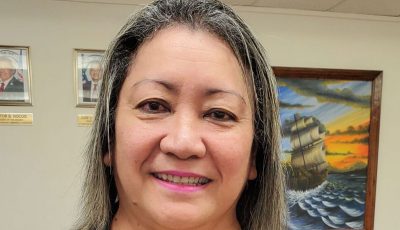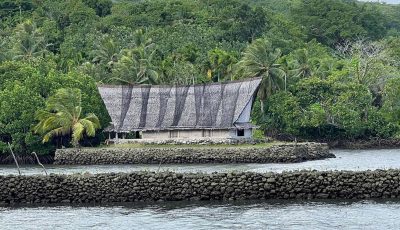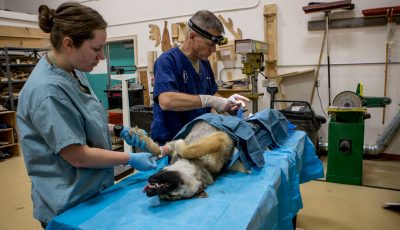Students learn about the environment at BECQ Expo
A one-stop event for children to learn about the environment kicked off yesterday at the American Memorial Park.
Using models, photos, and on-the-job equipment, forestry, biology, and safety experts taught students about the various ways their environment work. Students learned about soil protection, healthy or sick corals, reusable bags, and the harm of pesticides and runoff pollution, among others. They also examined the bones of a 35-foot Bryde whale that washed up at the Masalog Beach on Tinian in 2005.
According to the Bureau of Environmental and Coastal Quality, they host the Environmental Expo to “improve, protect and conserve Saipan’s natural resources.” BECQ says the three-day event is “a one-stop opportunity both for presenters to reach out to hundreds of students, and for 4th and 5th grade teachers to fulfill environmental education curriculum standards for their classes.”
Several other environmental partners from the community and government joined BECQ for the event.
Yesterday, students gathered around U.S. Department of Agriculture’s Kendal Hicks and his model farm. He taught students to “take half and leave half” when grazing with farm animals for a healthy pasture.
CNMI Forestry’s Frank Ada and Jason Tenorio taught kids about forest health, asking them to report any unusual insects they find to their teachers because they might be harmful to the plants here.
When asked, “Why do you like this job?” Ada told the student that he liked hiking and planting. “I like to get my hands dirty,” he said
The Department of Fire EMS team showed students their on-the-job equipment, passing around fire helmets and explaining how they used water nozzles, stretches, and first aid kits.
The Safe Drinking Water branch of BECQ Division of Environmental Quality asked students to think about where they get their water. They taught how water is made safe to drink, from the ground, to utilities, to the stores.
DEQ marine biologist Steven Johnson taught student how to identify healthy corals from sick ones. Using different pictures of corals and matching their colors to a “coral health chart,” students learned that healthy coral were colorful and sick ones were white.
“It’s all our responsibility to look for healthy and sick coral at the beach,” he told students, adding that if all corals at Pau Pau Beach were sick, for example, people might not be able to go to the beach.
Becky Furey, program manager at Micronesia Islands Nature Alliance, taught students about things that don’t belong in the water like plastic bottles, bags, or slippers. These could end up killing turtles.
At the end of her presentation, students pledged, “I promise to throw litter away, and show others how to recycle the right way. I will respect my ocean and the land, by protecting it with my own two hands. I need to care, because out island is our home to share.”
John Furey, of Asia Pacific Academy of Science, Education and Environmental Management, laid out the meters-long vertebra of a beached whale at the park amphitheater.



























